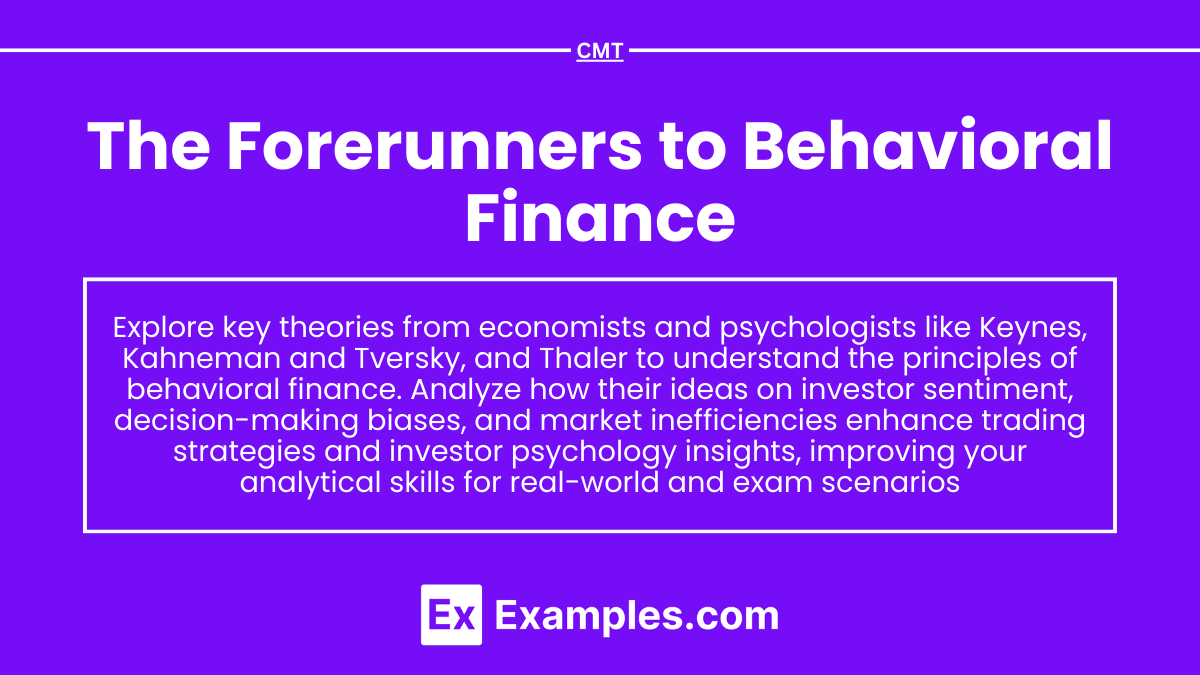Preparing for the CMT Exam involves a solid grasp of “The Forerunners to Behavioral Finance,” a key topic in understanding market psychology. This includes insights into foundational theories, such as those by Keynes and Kahneman, that explore investor behavior, biases, and decision-making under uncertainty—crucial for analyzing market trends and achieving a top score on the CMT.
Learning Objective
In studying “The Forerunners to Behavioral Finance” for the CMT Exam, you should learn to understand the key theories and principles that laid the groundwork for modern behavioral finance. Explore influential concepts from early economists and psychologists, such as Keynes’ views on investor sentiment, Kahneman and Tversky’s studies on decision-making under risk, and Thaler’s work on biases. Analyze how these foundational ideas explain market inefficiencies, herding behavior, and irrational investing patterns. Apply these insights to interpreting market dynamics, recognizing behavioral biases in trading, and understanding investor psychology, which will enhance your analytical skills for real-world applications and exam scenarios.
Historical Foundations of Behavioral Finance
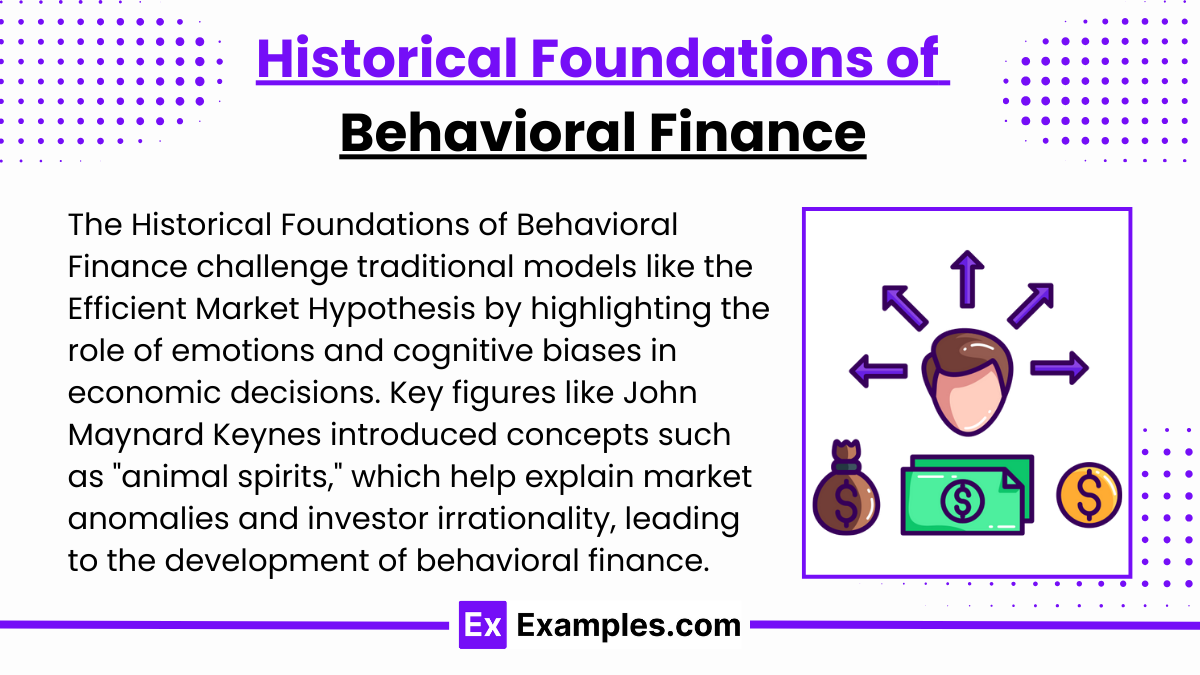
The Historical Foundations of Behavioral Finance examine the origins of behavioral finance through early economic and psychological insights that challenged the conventional view of perfectly rational investors. Traditional finance models, like the Efficient Market Hypothesis (EMH), assume that investors are rational and markets are efficient, meaning prices fully reflect all available information. However, historical foundations of behavioral finance highlight that human behavior often deviates from rationality due to cognitive biases, emotions, and psychological influences.
One key figure, John Maynard Keynes, introduced the concept of “animal spirits” in the 1930s, referring to the emotional and psychological factors that drive economic decision-making. Keynes argued that investors’ sentiments and confidence levels, rather than pure logic, influence their actions, particularly under uncertain market conditions. This insight laid the groundwork for understanding how emotions like fear and greed impact financial decisions, often leading to irrational behaviors such as panic selling or euphoric buying during market bubbles.
In the decades that followed, psychologists and economists continued to explore these concepts, examining how irrationality shapes financial markets. Studies on cognitive psychology highlighted the role of mental shortcuts, or heuristics, in decision-making, which often leads to systematic biases in judgment. For example, biases like overconfidence, loss aversion, and anchoring can influence investment choices in ways that diverge from pure logic or probability.
These early ideas set the stage for the formal development of behavioral finance, which integrates psychological and sociological perspectives into financial analysis. By understanding the historical foundations, finance professionals gain insight into how market anomalies, such as price bubbles and crashes, often stem from collective behaviors rather than isolated economic factors.
Keynesian Economics and Investor Sentiment
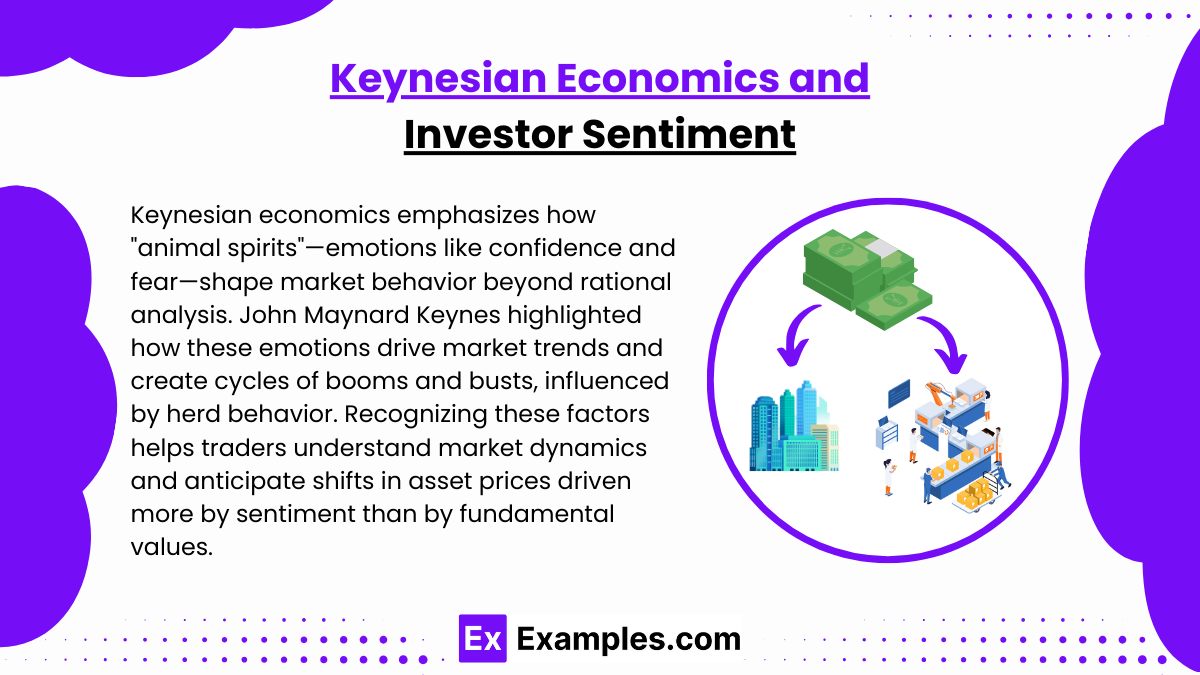
Keynesian economics introduces a psychological dimension to understanding market behavior, focusing on how emotions and group dynamics influence investor decisions. John Maynard Keynes proposed that financial markets are not solely driven by rational analysis but are also shaped by what he called “animal spirits”—the human emotions and instincts that can lead to unpredictable, often irrational behavior.
In this context, “animal spirits” refer to factors like confidence, fear, and optimism, which collectively drive market sentiment. For instance, during economic booms, high investor confidence can lead to inflated asset prices, while fear during downturns can result in rapid sell-offs. Keynes observed that these psychological forces can create self-fulfilling cycles: optimistic investors drive prices up, attracting more buyers, while fearful sentiment triggers widespread selling, exacerbating price declines.
Keynes also noted the influence of herd behavior, where investors follow the majority, often disregarding fundamental analysis in favor of market trends. This herd mentality can cause price bubbles, as seen in historical events like the dot-com bubble, where enthusiasm and speculation led to unsustainable asset valuations. By understanding Keynesian insights, traders can better recognize when market sentiment, rather than intrinsic value, is driving asset prices, allowing them to anticipate potential reversals or corrections in irrationally trending markets.
Behavioral Biases in Decision-Making: Insights from Kahneman and Tversky
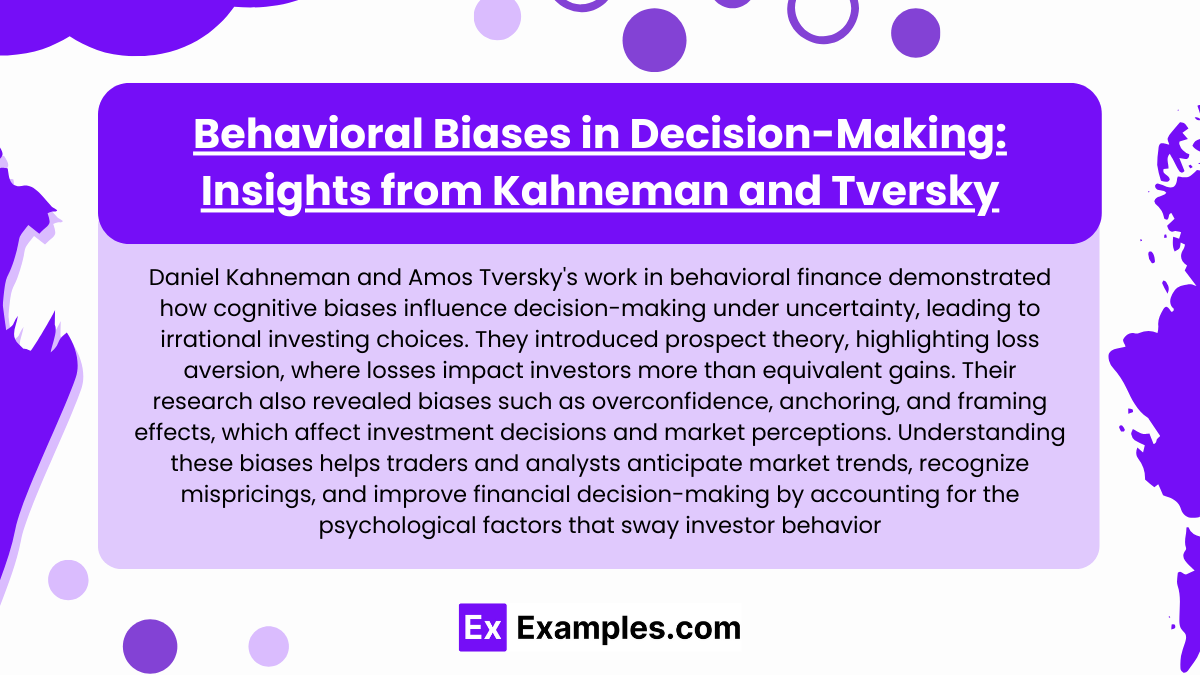
Daniel Kahneman and Amos Tversky revolutionized finance by demonstrating how cognitive biases affect decision-making under uncertainty, often leading to irrational choices in investing. Their work introduced the concept of prospect theory, which explains that individuals value gains and losses differently. For instance, people experience the pain of losses more intensely than the pleasure of equivalent gains—a phenomenon known as loss aversion. This bias leads investors to hold onto losing investments longer than is rational, hoping for a recovery, or to sell winning investments too quickly to “lock in” gains.
Kahneman and Tversky also identified overconfidence bias, where investors overestimate their knowledge or ability to predict market movements. This bias often results in excessive trading, which can lead to suboptimal returns due to transaction costs and poor timing.
Another significant bias they uncovered is the anchoring effect, where individuals rely too heavily on an initial piece of information when making decisions. For instance, if an investor buys a stock at a specific price, they may become anchored to that price, affecting their perception of the stock’s future value and influencing their decisions to buy or sell based on that anchor, even if market conditions change.
The researchers also introduced framing effects, which reveal how the way information is presented can affect decision-making. For example, people may react differently to the phrase “a 10% chance of losing” compared to “a 90% chance of winning,” even though both describe the same risk. In investing, framing can lead to different risk perceptions and behaviors, depending on whether information emphasizes potential gains or losses.
Kahneman and Tversky’s insights reveal that investors are often influenced by psychological factors rather than strict rationality, leading to predictable patterns of bias-driven behavior. By understanding these biases, traders and analysts can better anticipate market trends, identify mispricings, and make more informed decisions that account for common investor errors.
Thaler’s Contributions to Behavioral Finance and Market Inefficiencies
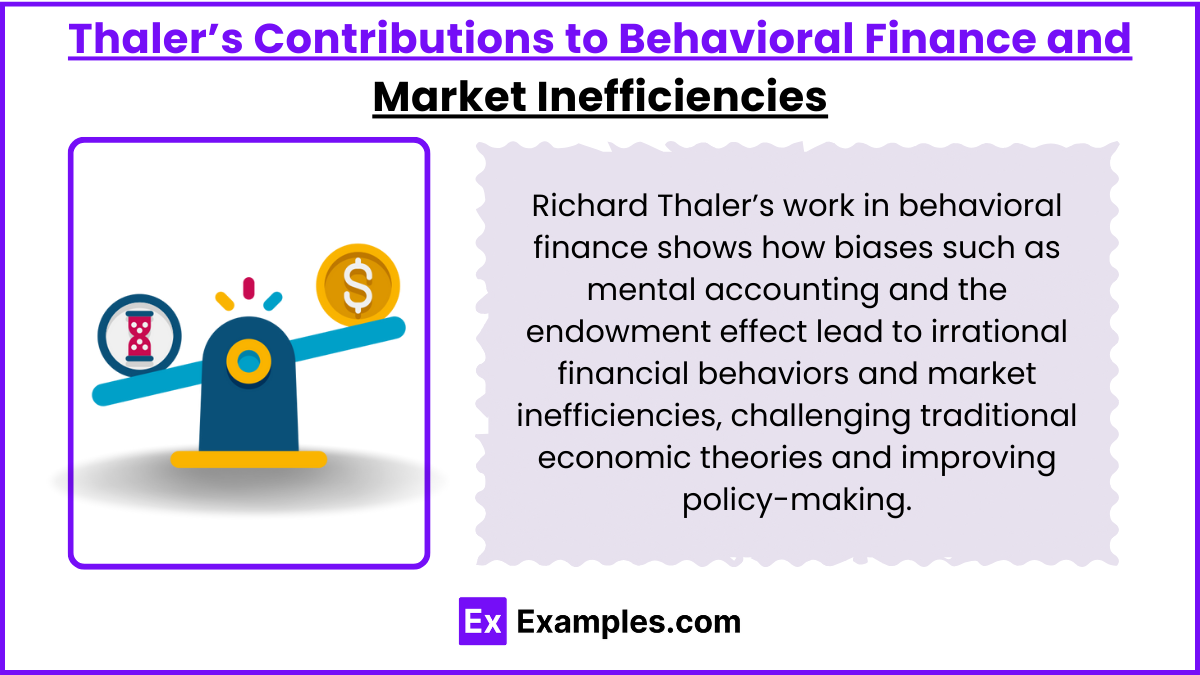
Richard Thaler’s work in behavioral finance has been pivotal in illustrating how psychological biases and irrational behaviors impact economic decisions and market outcomes. Thaler extended the findings of earlier behavioral economists like Kahneman and Tversky by applying these psychological insights more directly to financial markets and personal finance.
One of Thaler’s key contributions is the concept of mental accounting, where people categorize their money into different “accounts” based on arbitrary criteria, which affects how they spend, save, or invest it. For example, someone might treat a tax refund differently from their regular salary, even though both are essentially the same – money. This behavior can lead to inefficient financial decisions, such as using a high-interest loan to finance a purchase while maintaining low-interest savings.
Thaler also popularized the idea of the endowment effect, which describes how individuals ascribe more value to things merely because they own them. This bias can lead to market inefficiencies, as investors may demand an irrationally high price to part with an asset they own, above what they would be willing to pay to acquire the same asset if they did not own it.
Another significant concept Thaler introduced is nudge theory, which suggests that subtle changes in how choices are presented can significantly influence the decisions people make, without restricting their freedom of choice. This theory has been applied in various contexts, including retirement savings plans where employees are automatically enrolled but have the option to opt out. This approach has proven to significantly increase participation rates, demonstrating how small nudges can lead to better financial behaviors and outcomes.
Through these and other insights, Thaler has shown that understanding the quirks of human behavior can help explain persistent market anomalies and inefficiencies that traditional economic models cannot. His work not only challenges the notion of rational markets but also provides practical tools for improving financial decision-making and policy.
Examples
Example 1
John Maynard Keynes and Animal Spirits: Keynes introduced the concept of “animal spirits” to explain how irrational behaviors and emotions can drive economic decisions, influencing financial markets and causing cycles of booms and busts.
Example 2
Harry Markowitz and Portfolio Theory: While primarily known for his development of Modern Portfolio Theory, Markowitz also acknowledged the psychological factors that could lead investors to make decisions that do not strictly adhere to the expected utility maximization framework.
Example 3
Paul Samuelson and Rational Economic Man: Samuelson, in his early work, challenged the concept of the “rational economic man” by incorporating more realistic psychological elements into economic theory, which helped lay the groundwork for later behavioral studies.
Example 4
Herbert A. Simon and Bounded Rationality: Simon introduced the concept of bounded rationality, which suggests that individuals are not fully rational but instead operate within the confines of the information they have and their cognitive limitations, influencing their economic decisions.
Example 5
Robert Shiller and Market Volatility: Shiller’s research on excess market volatility and the role of investor behavior demonstrated that markets are often driven by human psychology and social dynamics, which can lead to significant market inefficiencies and deviations from fundamental values
Practice Questions
Question 1
What concept introduced by John Maynard Keynes explains the impact of investor emotions and instincts on financial markets?
A) Efficient Market Hypothesis
B) Animal Spirits
C) Rational Expectations
D) Market Equilibrium
Answer: B) Animal Spirits
Explanation:
John Maynard Keynes coined the term “animal spirits” to describe the emotional and instinctive forces that drive human behavior in financial markets, leading to decisions that may not always be rational. This concept highlights the role of psychological factors in economic cycles.
Question 2
Which economist is known for introducing the theory of bounded rationality, recognizing the limits of human decision-making?
A) Daniel Kahneman
B) Harry Markowitz
C) Herbert A. Simon
D) Richard Thaler
Answer: C) Herbert A. Simon
Explanation:
Herbert A. Simon introduced the concept of bounded rationality, which suggests that when individuals make decisions, their rationality is limited by the information they have, the cognitive limitations of their minds, and the finite amount of time they have to make a decision. This theory is a cornerstone of behavioral economics, challenging the notion of the fully rational actor prevalent in classical economic theories.
Question 3
Which of the following is NOT a contribution of Richard Thaler to behavioral finance?
A) Endowment effect
B) Mental accounting
C) Prospect theory
D) Nudge theory
Answer: C) Prospect theory
Explanation:
Prospect theory was developed by Daniel Kahneman and Amos Tversky, not Richard Thaler. It is a key psychological theory of decision-making under risk and uncertainty, explaining why people make irrational financial decisions. Thaler’s contributions to behavioral finance include concepts such as the endowment effect, mental accounting, and nudge theory.

